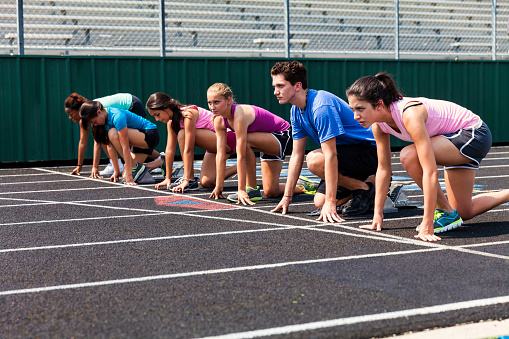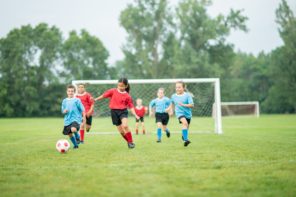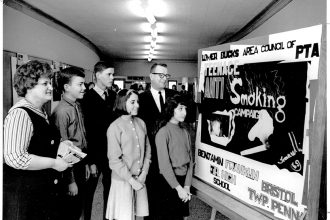More than 45 million youth athletes between the ages of six and 17 years old participate in sports every year—for good reason. In addition to the physical benefits, young student-athletes also build life skills, including confidence, leadership and teamwork, among other things. However, these benefits don’t come without risk. According to the CDC, sports-related injuries are the top cause of emergency room visits for youth ages 12-17.
As athletic trainers, we are health care professionals on the front lines of reducing the risk of sports-related injuries. Currently, only 37% of public high schools in the United States have a full-time athletic trainer and that percentage falls drastically when middle schools are added to the equation, so it’s important for parents to understand how they can help prepare their athlete for activity as well as advocate for appropriate health care for their student.
Here are ways to reduce your athlete’s chances for injury while playing sports.
Prepare for Success
- Get a Physical Exam: Ensure that your athlete has completed a pre-participation evaluation (PPE) with a medical professional. PPEs are a screening tool used by athletic trainers, physicians and others in the sports medicine community to help identify conditions that may make it more likely that an athlete will get injured or be at risk for sudden death.
- Complete the Medical Authorization Forms: These forms provide health care providers—such as athletic trainers and school nurses—with important information about your athlete’s medical history, so be sure to note any conditions such as asthma, allergies, seizures and previous concussions. The forms also provide emergency contacts and permission for the school’s medical team to administer emergency care if necessary.
Ensure a Safe Sporting Environment
- Ask About the Coaches: While the coach’s credentials, background and knowledge of the sport and its rules are important, it is equally important that they create a culture that values the health and safety of athletes. This helps players feel safe to report injuries and receive the appropriate medical attention.
- Evaluate the Facility: Make sure that the places your child uses to practice, play and receive medical care are safe and clean environments. Someone, such as an athletic trainer, should be inspecting playing fields and courts for potential hazards, coordinating cooling systems during high heat, disinfecting systems to prevent or reduce the spread of infectious diseases and advocating for updates or repairs if needed.
- Double-Check the Athletic Equipment: Schools must make sure that athletic equipment is properly fitted and maintained. A medical professional should ensure that equipment is approved for use by the appropriate safety organizations, coordinate coaches’ education related to fitting equipment, and review policies for how to maintain, clean and sanitize equipment for athlete safety.
Get Rest to Aid Recovery
- Teach Good Sleep Hygiene: Lack of sleep interferes with healing and recovery of injuries as well as physical conditioning. Cells grow, repair and rebuild during sleep, making it essential to athletic performance, as well as injury recovery and prevention. It also affects metabolism, stress and emotion control, decision-making, focus and maintaining attention which are all critical in sports, the classroom and living a mentally and physically healthy life. Key ways to encourage healthy sleep include creating a “sleep-friendly environment” (dark, cool and comfortable), enforcing a sleep schedule (a minimum of seven hours per night), putting away electronics at least an hour before bedtime and actively managing stress levels.
Cross-Train to Avoid Overuse Injuries and “Burnout”
- Avoid Early Specialization: Allowing your child to specialize in one sport year-round may lead to increased stresses placed on specific body parts, leading to increased chances of injury. These overuse injuries often go undiagnosed for long periods of time and may become more serious, which may lead to loss of playing time and function as well as increased mental exhaustion.
- Ways to combat this include limiting weekly practices (train no more than five days a week) and making sure your child takes a break from their main sport to cross-train in other sports and allow the body to recoup. This time off also ensures a psychological break, which can help reduce burnout and overtraining syndrome.
Prepare for Worst-Case Scenarios
- Know Your Emergency
Action Plan: Normally developed by the school’s athletic trainer, an emergency
action plan (EAP) outlines roles and responsibilities for handling a crisis
like a catastrophic injury, inclement weather and even active shooter
situations. It has detailed answers to questions like:
- Who will render first aid? Who will call EMS?
- How will parents be notified? Is there a communication system in place at all athletic practices and games?
These plans must be reviewed and rehearsed, at minimum, on an annual basis and take things like school construction into consideration. Ask your child’s school if there is a venue-specific EAP for all practice and game facilities and where to locate them.
- Note the Location of the AED: Know where the nearest automated external defibrillator (AED) is located and ask if there is someone certified in CPR, AED and first aid before the start of every practice and game. If the answer is no, advocate for that role to be filled immediately. Time plays a critical factor in surviving emergencies such as a sudden cardiac arrest event, so it’s vital that there is someone trained who can immediately and confidently jump into action.
Does your school provide a full-time athletic trainer? If not, ask questions and start a conversation about how you might acquire an athletic trainer to improve sports safety for athletes at your school. By employing a full-time athletic trainer, schools and parents can rest assured that a dedicated healthcare professional is committed to the mental and physical well-being of their athletes. For more information or to start your journey in advocating for an athletic trainer at your school, visit AtYourOwnRisk.org.
The National Athletic Trainers’ Association (NATA) is the professional membership association for certified athletic trainers and others who support the athletic training profession.





